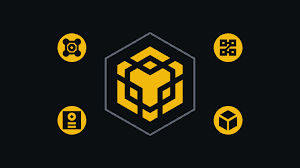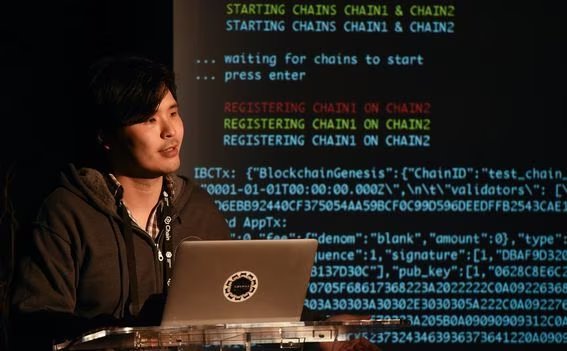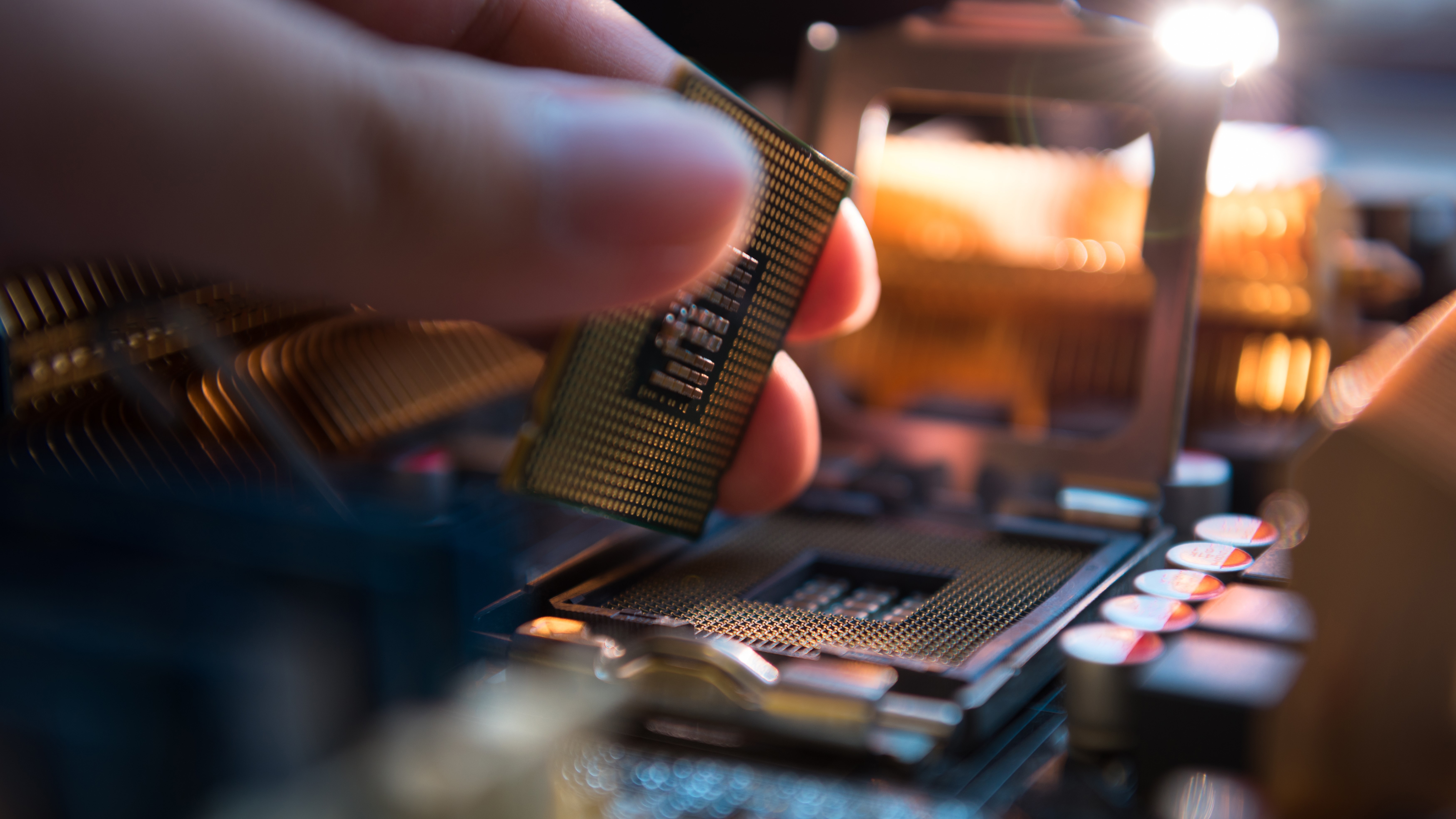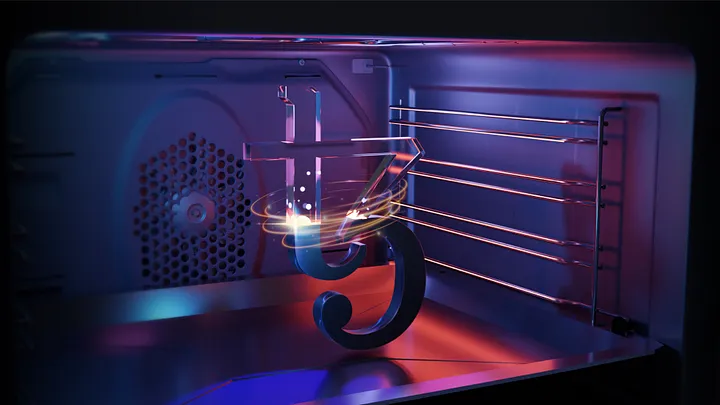TL;DR: With a new update or project being released almost every day, it’s clear the crypto ecosystem is constantly evolving. Solana has gone through a lot of ups and downs to reach the level it’s at today — but it’s just the beginning. Knowing what brought it here and why it was created will lead you to make better decisions when investing or simply using Solana.
In this article, we’re gonna dive into the Solana ecosystem, answer all the $SOL related questions and even more. Prepare yourself for a history lesson and a journey to the future of Solana!
What is Solana (SOL)?
Solana is a Layer 1 blockchain created in 2018 by Anatoly Yakovenko. It is a smart contract platform that focuses on being highly scalable. Scalability is defined as the amount of transactions that Solana can process per second, or throughput.
Solana uses the Proof of History consensus combined with the underlying Proof of Stake consensus. This is often called a hybrid consensus.
Proof of Stake means that Solana gets its security from validators that stake $SOL to secure the chain. This is different from Proof of Work blockchains, where miners replace the role of validators.
Proof of History is the main component of the Solana protocol that is responsible for the bulk of transaction processing. Solana’s approach towards scaling is done by ordering transactions based on a timestamp. This is different from Ethereum’s Proof of Stake, where nodes have their own internal clock.
To give more info, blockchains like Ethereum don’t use the concept of time. Instead, consensus is reached based on the block height. In case of a dispute, the longest blockchain is preferred by the validators. Block height is a cryptographic way of saying that the time has passed.
Relying on block height is considered to be more secure, as it proves that validators have spent resources on mining every block, so previous transactions are valid. The downside is that scalability will be severely reduced. Although Bitcoin and Ethereum are secure, they’ve always struggled to scale beyond 15 transactions.
Blockchains had always been in the difficult position of making a tradeoff between decentralization, security and scalability. This problem has been coined as the “blockchain trilemma.”
Each blockchain that has ever emerged had its architecture influenced more or less by the blockchain trilemma. Some networks traded decentralization to achieve security and scalability, while others traded security to achieve decentralization and scalability. Ethereum chose to trade scalability for decentralization and security. Solana traded decentralization in order to focus on scalability and security.
Solana’s approach brings it closer to the mechanisms that already exist in data centers. Every computer connected to the Solana blockchain has an internal clock. The clock doesn’t tell time like a normal clock. Instead, it keeps track of transactions as a sequence of events, like a timeline. Transactions are approved based on this sequence. A participant approving a transaction can determine the order of transactions based on when they occurred in the timeline. If a transaction does not follow the correct sequence of events it is rejected.
While Solana has made its reputation for being the fastest blockchain, the reality is that the consensus mechanism hasn’t been tested on a large scale. The evolving state of Solana is outlined by the fact that its protocol is still in “mainnet beta.”
The concept of blockchains is not new, and Solana is one of many such networks. The idea started in 2008 with the release of Satoshi Nakamoto’s Bitcoin Whitepaper. This kicked off the subsequent creation of many different types of networks under the same “blockchain” terminology.
Despite being similar in concept blockchains have all different architectures and use cases. What all have in common — including Solana — is that they have to be secure. Security is the ability of a blockchain to prevent attacks and penalize malicious actors. This is usually done through their consensus algorithm and the mechanism they use to reach finality.
Finality is achieved when a block has been created and is now immutable, meaning that nobody can change the date inside. Over time many different mechanism have been designed, ranging from Proof of Work, Proof of Stake to novel ones called Proof of Spacetime. Each one hopes to achieve the best way of securing the network they are built for.
As noted before, Solana makes use of type of consensus mechanism we call “Proof of History” — or PoH for short.
Solana’s has been created with the goal of being an alternative to Ethereum. Ethereum has been created in 2014 and introduced the concepts of smart contracts. These are small applications that run inside a virtual machine called the Ethereum Virtual Machine. The EVM allows for a blockchain to process more than simple token transfers. To give more info, it opened up the possibility to run applications in a decentralized manner.
Applications usually run in the cloud or on your computer, so running them on a blockchain was unheard of at the time. This makes them uncensorable (nobody can stop them) and ensures they’re always online — as long as the chain they run on is processing transactions.
Recently, Solana became EVM compatible. While similar to Ethereum, it leverages Solana’s capabilities, specifically its speed. Developers can take advantage of the low gas fees and the network’s 50K+ TPS to serve more users, while offering the same experience as on Ethereum.
Solana is powered by the SOL token, a central part of the Solana ecosystem. SOL is a deflationary token due to the way its tokenomics have been planned. This means that less SOL coins will be created with each block mined. The Solana inflation rate started at 8% during its first 3 years, but it goes on a deflationary path of 14%.
The tokenomics of Solana also specifies a maximum amount of tokens that will ever be created. The maximum amount that will ever be minted by the protocol is 535,195,330 SOL
For more details about how you can earn more Solana by running a validator node at home check out our Solana Mining & Staking guide. It includes the exact steps and best methods of earning more crypto like $SOL in 2024 and beyond.
When was Solana (SOL) created?
Solana (SOL) was created after Anatoly Yakovenko’s left Qualcomm. Work began on the Solana chain in 2018, but before that, a couple of important events happened. Most events revolve around the Solana CEO and Founder, Anatoly Yakovenko.
The first meaningful event is Anatoly Yakovenko’s whitepaper on Solana.
Published in November 2017, it described a new consensus algorithm called Proof of History. Anatoly came with the concept while designing distributed systems at Qualcomm, Mesosphere and Dropbox. At the time, Ethereum was experiencing its first major bull run, and other blockchains were looking to copy it. But Anatoly didn’t think that was a winning strategy. Instead, he was thinking about how decentralized blockchains could one day replace centralized exchanges like NASDAQ.
Modern stock exchanges are some of the highest throughput systems in the world, with servers regularly executing tens of thousand of transactions per second. A big part of why stock exchanges remain fast and relatively fair is precisely because they are centralized.
Everyone trusts the exchanges to put everyone on a level playing field, and so far, they have. When stock traders deploy code to interact with the New York Stock Exchange, that code can wind up running on any one of many servers in the exchange data center. The problem is that if your server is a little bit closer to the central server, you could wind up with speed advantage. So the NYSE connects every server with a cable of the exact same length — 185 yards.
This level of control is possible only in centralized servers, so the idea of running something like the NASDAQ on a blockchain seemed like a crazy idea. But Anatoly formulated a solution by going back to the early days of radio.
The networks that power traditional radio had a problem when they first came out. If two stations tried to transmit on the same channel simultaneously, it would create static. Radio engineers figured out the solution by placing clocks at radio stations, and then coordinating the exact time when radio stations were allowed to transmit.
Google uses a similar mechanism for synchronizing its data center. Every Google server farm has an atomic clock which allows it to stay in sync with other server farms around the world.
The Bitcoin or Ethereum networks don’t have built in clocks. So their validators need to spend considerable resources to figure out the correct order of transactions. Anatoly realized that if he added a timestamp to every transaction he could speed up things considerably. He called this technology, which is now the core building block of Solana, Proof of History.
Proof of History is a game-changer in terms of speed. Instead of waiting for consensus, blocks can be approved independently, provided that the timestamp is correct.
Another meaningful event was the moment Anatoly began prototyping the first implementation of his whitepaper.
In order to build the initial founding team for Solana, Anatoly reached out to former colleagues from Qualcomm. This was a smart move, since building Solana would require some remarkably complex low-level programming.
Anatoly along with 4 of Solana’s future co-founders began working relentlessly on writing the codebase. They weren’t the only ones building in the crypto space — hundreds of other experts were competing to build the most scalable blockchain.
After months of grueling work, the project was published to GitHub under the name Silk. The stakes were high, as new blockchain implementations were coming up in waves, each advertising faster transaction speeds and better security. One week after the Silk release, their project demonstrated 10 thousand signed transactions could be verified and processed in just over half a second. Even by today’s standards, this is an achievement that most blockchains haven’t been able to reach, let alone during their first iteration.
But for Solana, tens of thousands of transactions per second was still not enough. NASDAQ’s network already handles millions of transactions per second. It was clear that without some engineering upgrades, Solana wasn’t going to make it out of production.
Shortly after the experiment, another former Qualcomm cohort, Stephen Akridge, demonstrated throughput could be massively improved by offloading signature verification to graphics processors. This option eventually led to Solana reaching its scalability limits later on. However, Solana was determined to go with this option.
Graphics processors have way more computational power than the rest of the computer. Rendering graphics is an intensive task, which is why early Bitcoin miners figured they could improve their chances of validating blocks using GPUs instead of CPUs.
After a few more months of intensive testing, Solana finally scaled up their technology to run cloud-based networks. They published a 50-node testnet, and the results started to show up. Solana was processing transactions at an astounding pace, occasionally reaching 250,000 TPS.
Although Solana is a multi-billion dollar blockchain, they’ve launched the project with a pretty conventional seed round. Anatoly raised roughly $3 million in exchange for 16% of the token supply. This deal now stands as one of the best investments of all time, since the investors made 1,000,000% return in just a few years.
Later on, Solana held a public sale, bringing $25.6 million from retail investors. Such a huge investment has allowed Solana to continue building the vision of a fast and scalable blockchain.
Who created Solana (SOL)?
Solana was created by Anatoly Yakovenko together with his team of former colleagues at Qualcomm.
Anatoly Yakovenko is an engineer born in Ukraine. He worked at several high profile companies and now serves as the CEO of Solana. He works on the underlying protocol that powers Solana along with the rest of the Solana Labs members.
Anatoly Yakovenko studied at University of Illinois Urbana-Champaign between 1993 and 2003, where he graduated with a Bachelor’s Degree in Computer Science. During his college years, Anatoly founded his first startup, called Alescere. It was a Voice over Internet Protocol (VoIP) startup that handled the delivery of voice and multimedia over the internet.
Just as the internet boom was reaching its peak, Anatoly figured he could build the server components for a VoIP system for small businesses. Unfortunately, the business failed after three years. Anatoly was still ahead of his peers. Working hours at a day figuring out how to develop protocol stacks was an invaluable skill.
Anatoly got hired at Qualcomm to work as an engineer. Little did he know that at Qualcomm, he would gain all the experience necessary for his future breakthroughs. He climbed the company ladder, becoming a senior engineer, then staff engineer. He eventually was promoted to senior Staff Engineer Manager.
For Anatoly, it was all about the journey. After 13 years at Qualcomm, he worked as the lead architect for chipsets for next-generation applications, he coordinated dozens of people, got to interact with the latest technology first-hand, and made long-lasting friendships.
One of his most important projects was developing the core kernel for BREW’s Operating System. It was a highly technical challenge that involved working with a computer’s operating system components to make it as efficient as possible.
After spending most of his career at Qualcomm, Anatoly moved on to work at Mesosphere and Dropbox. His time at both companies was less than a year, time during which he continued to work on distributed systems.
His first contact with crypto was in 2013, when he first read about Bitcoin. At some point, Anatoly admitted that he planned on mining Bitcoin. He ordered some ASIC miners, but his order was delayed by 6 months. As it turned out, the issuing company had used the mining rigs for themselves before shipping them. Anatoly said that it was a bitter experience, which reflected the state of the industry back then.
Anatoly regained interest in the crypto space with the simple realization that traditional finance was too slow with its paper-based system. Through the whole process, he realized that the whole process could be more efficient using blockchain technology. With simple math of cryptography and a piece of software, the consumer can get the same guarantees. That’s how the seeds for Solana have been planted.
Anatoly Yakovenko created Solana with help from Greg Fitzgerald, Stephen Akridge, and Raj Gokal. All of them have been previously working at Qualcomm and now serve as the core team at Solana Labs. Solana was basically made out of superstar engineers, capable of executing on Anatoly’s vision.
Shortly after Yakovenko published the whitepaper for Proof of History consensus, he was advised by his colleague Greg Fitzgerald to implement the code in Rust. Greg claimed that the language's safety guarantees would improve software productivity, which it did! Just two weeks later, the entire codebase had been migrated from C/C++ to Rust. Anatoly called the project Loom.
Thanks to the input from his colleagues at Qualcomm, the team had pulled off a prototype on February 13, 2018. The project was published to GitHub under the name Silk in the loomprotocol organization. On February 28, Greg made a test where 10,000 transactions were verified and processed in under half a second. Shortly after, Stephen Akrige demonstrated how the network could scale exponentially by offloading signature verification to graphics processors. From that moment, Anatoly and his colleagues co-founded a company, then called Loom.
Around the same time, Ethereum-based project Loom Network launched, and many people were confused whether they were the same project. Loom rebranded to Solana. They chose the name “Solana” inspired by the small beach town North of San Diego called Solana Beach, where Anatoly, Greg and Stephen lived and surfed for three years when they worked for Qualcomm. On March 28, the team created the Solana GitHub and renamed their prototype to Solana.
In June of 2018, the team scaled up the blockchain to run on cloud-based networks and on July 19, published a 50-node, permissioned, public testnet. Things were looking promising as the network would process up to 250,000 TPS at times. In a later release, the team published the same testnet with 150 nodes and the results were astounding: 200,000 TPS with bursts of 500,000 TPS.
The team was still far from pitching their project to NASDAQ and other financial institutions. If Solana were to gain their attention, applying blockchain technology wasn’t enough. Solana had to be able to compete with the millions of transactions per second handled by traditional finance.
To advance their concept, Anatoly Yakovenko pitched their idea to VCs, and raised a modest $3 million. The year was 2018, and crypto had entered in a bear market. Hundreds of projects got wiped out, and the perspectives of raising capital were dim. But Anatoly wasn’t scared. The entire team kept their head down and focused on improving Solana. It wasn’t until 2020 when the world got to hear about Solana again. From that moment on, Solana experienced unprecedented growth.
How is the Solana (SOL) token used?
The SOL token is the native token for the Solana network. Most assets in the Solana ecosystem are denominated in SOL, which makes it the default unit of account.
SOL is the fuel that powers transactions and block creation on the Solana chain. We sometimes refer to it as “gas”. Its primary use case is securing the network and keeping actors aligned to the same principles. Making a transaction on the Solana network requires a small fee in SOL, usually between $0.0001 and $0.0005. Because Solana has a quick time to finality and processes more transactions per second the gas fees quickly add up. This small fee is paid by users and goes to validators for doing their work.
Notably, the hardware requirements for becoming a validator node are quite demanding. It is estimated that only a handful of the 1000+ validators get 95% of the rewards. If you want to stake Solana, you can do so by delegating your SOL tokens to the validators listed on their website.
Currently, Solana is listed on multiple exchanges. The major ones are Binance, Coinbase and Kraken. If you want to skip ahead and learn how to earn more Solana by running a validator node at home check out our Solana Mining & Staking guide. It includes the exact steps and best methods of earning more crypto like $SOL in 2022 and beyond.
Who is developing Solana (SOL) now?
Development on Solana started in 2018 by a team who later spun out into Solana Labs. After validating their idea, Anatoly Yakovenko and his team established Solana Labs as a for-profit company with their headquarters in Geneva, Switzerland. Founded in 2018, Solana Labs handles the development of the Solana (SOL) blockchain and protocol.
Parts of the codebase was written by external developers, making open source contributors an important part of Solana’s success. Open source contributors can access the protocol’s code on GitHub and submit their contributions on a dedicated subsection. The overwhelming majority of contributions come from Solana Labs. Currently, their GitHub has more than 250 contributors and 150+ forks.
3 years into the protocol’s development, the team decided to launch Solana Foundation. Until recently Anatoly Yakovenko was part of the Foundation board of members, but he decided to focus full time on Solana Labs. The board is made out of 4 members, who are tasked with offering support for startups and making sure projects follow the principles of the protocol.
Like any successful blockchain network, it was essential that Solana amasses a strong community of validators that can maintain the network.
One important area for the Foundation is to help decentralize the network. In accordance to its mission, the Foundation is committing to delegate 100,000,000 SOL (over 80% of the Foundation’s treasury) through an auto-delegation strategy. Most funds will be channeled towards new validators.
To attract miners and builders, Solana Labs started offering grants. Over the course of 2 years, Solana has instated several sponsorship programs, aimed at accelerating development on their network. The initial sponsorship budget was $5 million, but it quickly grew to $100 million.
The $100 million fund targets Korean Web3 developers, and it focuses on metaverse, gaming and NFT projects. Aided by Solana Ventures, startups will receive guiding on how to optimize and gain additional funding for their products.
If you are interested to become a contributor to the protocol, you can participate in online events such as hackathons or in-person events such as the Breakpoint conference.
Because Solana is a centralized blockchain, they have no governance system. Every decision regarding to the future of the protocol and network is taken by Solana Labs. Given that Solana is still in open beta, we can assume that it’s too early for them to think of a decentralized governance system. On the other hand, a governance system wouldn’t be suitable at this stage of development.
Solana’s structure leaves room for an opaque improvement proposal mechanism, but it’s no guarantee that the team will take suggestions into account. Proposals must go though a review stage from the Solana maintainers before they get implemented. So far, no architectural proposal has been implemented.
What are the latest updates on Solana (SOL)?
Solana in 2019
2019 was a quiet year for Solana. Most of the work that took place was on optimizing the network. During this year, the project had little to no social media presence as we see nowadays. This is because Solana was still undergoing testnets. Building on their previous success, the team was now looking to scale Solana to 700K+ TPS. With a team of 200 validators, Solana was undergoing periodic tests, looking to make sure the network remains stable over long periods of time.
The concept of Solana built from its Proof of History consensus. As time went by, the team added new pieces to the blockchain. Most of the improvements are highly technical, but in essence, they were looking to address performance challenges in high-bandwith blockchains.
Despite being able to reach 100K+ TPS during closed testnets, the team was aiming for around 50K TPS for the mainnet. At such speed, Solana was still faster than any other blockchain with a block finality of 1-2 seconds. As things were shaping up good for the mainnet launch, Solana had one more event in place: Tour de SOL.
Tour de SOL was Solana’s incentivized testnet. In other words, this was the first chance Solana’s global community would have towards substantively addressing usability. And the best part was that validators could earn tokens for taking part. With three stages in total, each lasting for about a month, Solana gradually tested performance, smart contract execution, and finally, the fully featured testnet.
At the end of the year, Solana saw the light of the day with a $20 million funding. The project and the community had everything set for the mainnet.
Solana in 2020
In 2020, Solana launched the mainnet beta. The network was open for builders to join, but the “beta” was included to remind everyone that Solana has much more to achieve. The network could consistently handle 50,000 TPS, and it onboarded a peak 350 validators. Now that Solana was public, it was time to show the world their capabilities.
On March 23, Solana held its token sale on CoinList. The dutch auction sold 8 million SOL in 6 hours, raising $1.76 million from retail investors. Awareness about the network grew as the community counted 600,000 members all over the world. What followed next was a series of integrations with other projects.
A network that could handle 50K TPS made waves among the crypto community. This meant projects deploying on Solana could attract new users thanks to Solana’s low fees and fast finality. Out of 100 projects onboarded in 2020, some of them were high profile players such as Chainlink, Circle, Audius, Akash, Arweave, Tether, and Terra.
Meanwhile, Solana-native projects started to emerge. One early project to deploy on Solana was Serum, led by Alameda Research. Serum is a DEX that was running on an on-chain central limit order book (CLOB) on Solana’s mainnet. This is different from the Ethereum DEXs who were using a liquidity pool model. Because Solana was a permissioned network with fast speed, it was possible for DEXs to use the traditional order book model. Serum quickly became the de-facto liquidity hub on Solana.
An important factor that helped Solana gain so much traction were its hackathon events. During its 2020 hackathon more than 3000 developers joined. It was a great chance for startups to gain funding and launch their projects on Solana’s ultra fast network. As the hype kept growing, Solana introduced its Ethereum bridge, called Wormhole.
With its $10 billion TVL, Solana’s DeFi ecosystem was blooming. In order to reach more liquidity, it was time to open up the network to Ethereum. Wormhole allowed ERC20 tokens to be issued on Solana and vice versa for a fraction of the cost.
Just as things were going great, the first major outage paralyzed Solana. On December 4, the network stopped producing blocks, which prevented any new transactions from being confirmed. The network was paused for 6 hours, but no funds were at risk. Part of the reason why the restart was slow had to do with validator coordination. All of the nodes had to be online and restart the network at the same time. The community got over the outage pretty quick and resumed their activity. Little did they know that outages would become a constant theme for Solana.
Solana in 2021
2021 was Solana’s best year to date, reaching an all time high of $260. This was heavily influenced by a few key events and updates.
One of the biggest factors was the bull run. Euphoria took over the crypto markets as every project was experiencing new inflows of users and capital. Luckily for Solana, they had all the dapps that users wanted to access and the low fees became the main selling point for the network. Every single DeFi project on Solana recorded new highs in terms of TVL and usage. Notably, Serum broke 1 billion in volume since inception, and Raydium, the 2nd biggest DEX on Solana, surpassed $100 million in TVL.
To everyone’s surprise, NFTs were the biggest catalyst in attracting users to crypto. Everyone was flipping NFTs left and right, making life-changing sums of money in the process. Though it may sound irrational, people were selling their pfps for millions of dollars. For blockchains, it turned into a race to provide the lowest fees and the fastest transactions.
Solana was the biggest winner in this race. Making a transaction on Solana costs around $0.0001, which was 400,000x cheaper than on Ethereum. The biggest winners out of the NFT craze have been the validators, who collected fees from millions of NFT transactions.
Some of the biggest NFT collections that launched on Solana are Degenerate Ape Academy and Degods. With a minting price of 6 SOL and 3 SOL, respectively, their floor prices went above 60 SOL. Their exponential rise in value further fueled the fomo, as people minted any collection they could get their hands on, just to score some profit from selling shortly after.
If no VC wanted to touch Solana in 2019, now things were going the opposite. Every crypto fund wanted to invest in the project. During the “summer of Solana,” VCs contributed $314.15 million to the project. With all the funding, Solana planned to launch its incubation studio to accelerate development of new dapps.
On September 14, disaster stroke again. Solana went down for 17 hours, its longes outage in the network’s history. This time, the network was exposed to a DDoS attack, where attackers clogged the network with spam transactions. One of the disadvantages of low fees was that it was cheap to execute a DDoS attack.
Once the situation was diagnosed, the community proposed a hard fork of the network from the last confirmed slot, which required at least 80% of active stake to come to consensus. Over the next 14 hours, engineers from across the globe worked together to write code to mitigate the issue, and coordinate an upgrade-and-restart of the network among 1000+ validators. This time, the community became aware it was a serious vulnerability to the network.
Solana in 2022
The current year has been a challenging one for Solana. In the first 10 months, Solana made great progress with its suite of products. Now that they had a flourishing ecosystem, they could turn their attention to applications for regular users.
One of them is Solana Pay. Announced in the beginning of the year, it is a clever solution that enables users to pay for goods in SOL, at zero cost. The core premise behind Solana Pay is that the payment and underlying technology goes from being a necessary service utility to true peer-to-peer communication channel between the merchant and consumer. The app experience was similar to services like Apple Pay, but it introduced yield rewards.
If you were tired about Solana’s outages, well here comes another one. On April 30, the network stopped producing blocks for 7 hours. At this point, users became more alarmed about the situation. If Solana outages happen regularly, they won’t be able to access their funds. If something worse happens, then there is no way to move their money.
Users’ fears continued to mount, as the network went out again on June 1. This time, it lasted 4 hours and a half. It became clear that Anatoly had to address the issue, fast. The team was already working on creating a priority fee system, but the solution had to be addressed from its root cause. Solana has been able to achieve blazingly fast speed thanks to its centralized architecture. It was clear that the network wouldn’t be able to work the same in a decentralized structure, so Anatoly proposed the creation of an additional client. In case of another outage, nodes could switch to another client and restart the network much faster.
In between outages and development updates, Solana announced it was launching its own smartphone, called Saga. Their flagship Android device is being built by Solana Mobile, a subsidiary of Solana Labs.
Its most powerful feature was the Solana SDK, which would enable developers to build mobile centric dapps, while taking advantage of the device’s high performance. Taking the route of mobile manufacturing was a smart idea, as most of the world’s population still has no smartphones. Moreover, Saga owners would become crypto natives right out of the gate. According to Anatoly, Saga is more of an experiment. The course of the initiative will be dictated by the units sold and public reception.
As if things weren’t bad enough with the network outages, users of the Slope wallet found out their imported seed phrases had been compromised. After 4 hours since the attack began, hackers drained more than 9,231 wallets of approximately $4.1 million worth of assets. People were shocked to find out that Slope held their users’ private keys on an unencrypted excel document. Although it was Slope’s fault, Solana took the heat as well.
It’s getting boring to repeat, but Solana had yet another outage on September 30. Network was out for almost 8 hours, users angry...you know the story...
The final nail in the coffin for Solana started on November 11. FTX and Alameda, two major investors in Solana, have declared bankruptcy. Serum, which was fully controlled by Alameda, was the first to go down. People were worried that Alameda would dump their tokens in a bid to cash out. This chain of events took down the price of SOL to around $13.
Confidence in Solana is at an all-time low, as the extent of the FTX/Alameda collapse is yet unknown. Solana Labs remains determined to pull though and focus on their development, but it remains to be seen if users will be there to witness Solana’s revival.
Solana is in a constant growth cycle, and network participants like us can earn more $SOL without too much hassle or technical knowledge, right from the comfort of our homes.
Learn how to do that in our Solana Mining & Staking guide, which includes the exact steps and best methods of earning more crypto like $SOL in 2022 and beyond.



































































